SINGAPORE
History

History
History
From trading post to trading center
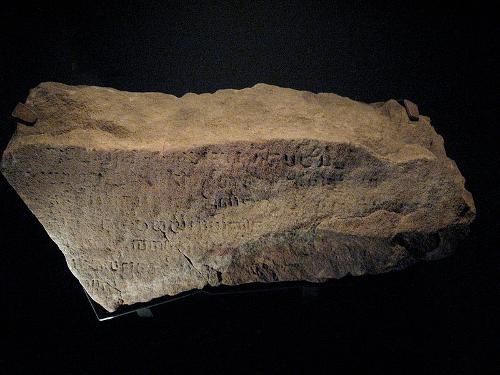 Singapore Stone from the 13th centuryPhoto: John Callas CC 2.0 Generic no changes made
Singapore Stone from the 13th centuryPhoto: John Callas CC 2.0 Generic no changes made
Chinese traders have been sailing along today's Singapore towards India since the 5th century. Very little is known of these earliest times. It is certain that it was not the first major transhipment port in the region. In the 7th century, Shriwijaya, a Buddhist kingdom based in Palembang, Sumatra, ruled the Strait of Malacca, an important trade route.
Singapore was part of the Shriwijaya Empire from the 8th century onwards and was nothing more than a trading post at that time. In the 10th century, this empire also ruled the Malay peninsula. Raids from rival kingdoms and the arrival of Islam, Shriwijaya lost control of the area in the 13th century.
The sultanate of Malacca soon took over and Singapore developed into a prosperous trading center in the 13th and 14th centuries until it was destroyed by Javanese in 1377 and the inhabitants moved to Malacca. The island then belonged to the Madjapahit Empire as an indirectly controlled area.
Domination by Portuguese, British and Dutch
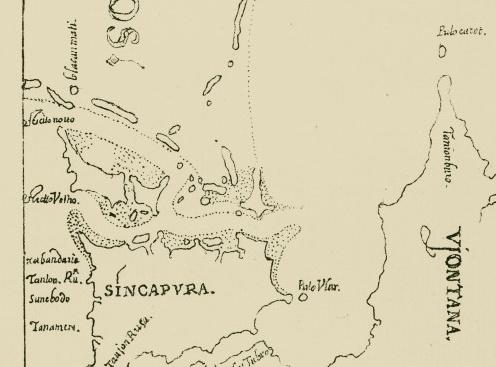 Map of Singapore from 1604Photo: Public domain
Map of Singapore from 1604Photo: Public domain
Armed with a cross and a cannon, the Portuguese conquered Malacca in 1511 and tried to ward off Islamic influences and take over the trade hegemony. Malacca soon fell and the Muslim traders left. In the meantime, the Dutch founded Batavia (is now Jakarta) in Indonesia and eventually took over Malacca from the Portuguese in 1641.
At the end of the 18th century, the British orientated themselves in this region. They were looking for a port to protect their trade routes that ran between China, Malaya and India. War in Europe led the French to occupy Holland in 1795. The British, themselves at war with France, took the opportunity to take over the Dutch possessions in Southeast Asia, including Malacca. After the Napoleonic wars, the British returned the possessions of the Dutch. However, many Britons disagreed and saw the further expansion of the British Empire in Southeast Asia lost.
Raffles
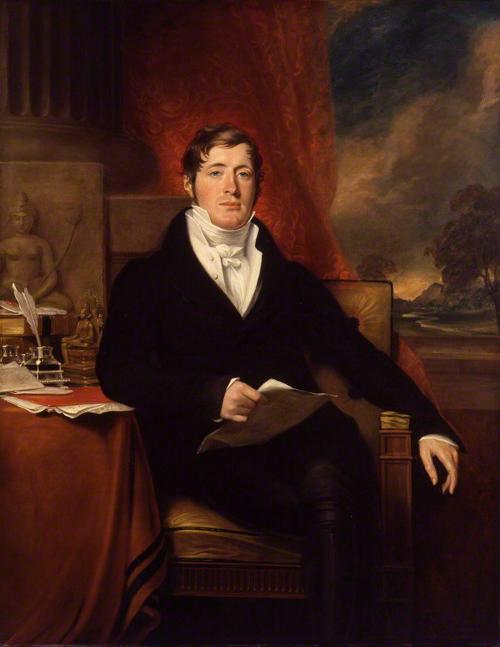 Sir Thomas Stanford Raffles, SingaporePhoto: Public domain
Sir Thomas Stanford Raffles, SingaporePhoto: Public domain
One such British was Thomas Stamford Raffles, then Lieutenant Governor of Java. He therefore asked for permission to set up a trading post to secure the British trade routes in this region. He initially chose the island of Riau, but the Dutch were too quick for him. Raffles then began negotiations with the Sultan of Johor, the local ruler.
When Raffles arrived in Singapore in 1819, Johor's empire was deeply divided after the death of the old sultan. His youngest son seized power while his oldest son, Hussein, was staying elsewhere at the time. The Dutch made an agreement with the younger brother while Raffles supported the older brother. Raffles even proclaimed him sultan, residing in Singapore. He also signed an agreement with the Chief Justice of Singapore (t Menggong) and bequeathed him an estate on the Singapore River. In addition, he gave them some money every year and thus secured the support of these powerful individuals. In 1824 he bought them out with the Sumatra tract and Singapore became part of the British East India Company. The Dutch were not very impressed by this and continued as they pleased.
Singapore is definitely in British hands
 View of Singapore 1830Photo: Public domain
View of Singapore 1830Photo: Public domain
Yet they already concluded a treaty with the British in 1824 in which they divided the spheres of influence in Asia among themselves. Singapore was thus assigned to the British. In 1826, Singapore, along with Malacca and Penang, two other British settlements in the peninsula of Malaysia, was placed under one administration and were called the "Straits settlements". Colonel William Farquhar was appointed by Raffles as the first resident of Singapore, who subsequently fell short of his duties. Three years after Farquhar, Raffles took over the leadership of Singapore. Raffle's vision was for Singapore to become the great successor to the transhipment ports of the Shriwijaya Empire.
Free trade, the attraction of settlers, the natural advantages of the port and especially the large influx of Chinese were the factors that made the fishing village develop into a large city in the 19th century. The plans with Singapore also meant that the population groups present would be more or less separated from each other and that each got its own piece of the island. Thus, the Europeans got land to the northeast of the government buildings; Chinese predominated at the mouth of the Singapore River; the Indians were concentrated around Kampong Kapor and Serangoon road; the Arab Street area was for Gujarati and other Muslim merchants; Tamil Muslim merchants had their shops around the Market Street Area; the Malay population lived in the swampy north of the city.
The large number of Chinese forced Raffles to work with them. The Chinese were organized into so-called “kongsi,” clans of ritual brotherhoods, triads and secret societies. These kongsis became increasingly important in the development of Singapore in the nineteenth century, especially the trade in pepper, tin and rubber grew enormously. The biggest profit maker, however, was the opium trade, which was transported from India to China. The revenues from this trade, but also from their own opium farms, accounted for half of all revenues until the twentieth century.
Singapore Crown Colony of Great Britain
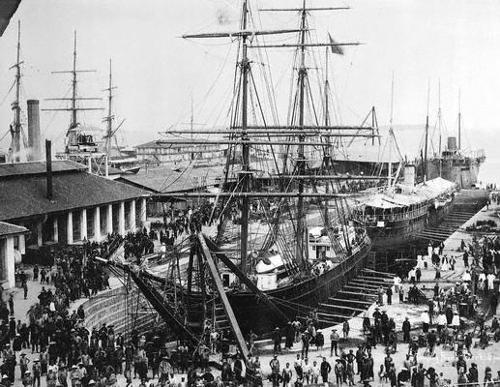 Singapore, Victoria Dock around 1890Photo: Public domain
Singapore, Victoria Dock around 1890Photo: Public domain
On April 1, 1867 the Straits Settlements became a crown colony of the British under the jurisdiction of the Colonial Office in London. The rise of the steamship and the opening of the Suez Canal in 1869 made Singapore even more important for the ships from Europe that sailed to East Asia. In the seventies of the nineteenth century, Singapore became the main center of the rubber trade. Before the end of the nineteenth century, prosperity rose to unprecedented levels and trade increased eightfold between 1873 and 1913. Prosperity naturally also attracted many immigrants, especially the Chinese. In 1860 the number of Chinese was 61.9% of the population, Indians 16.5%, Malaysians 13.5% and Europeans 8.5%. Peace and prosperity ended abruptly when the Japanese bombed the city on December 8, 1941. Singapore was occupied by the Japanese on February 15, 1942, who named the island Sjonan and the city of Sjonanto. This occupation would last three and a half years. British troops returned in September 1945 and Singapore came under British military rule. This period of military rule lasted until March 1946. At the same time, the Straits Settlement was dissolved, but the China-oriented population, which had also opposed the Japanese, remained unsettled for a long time. On April 1, 1946, Singapore became a crown colony, and Penang and Malacca became part of the Malay Union in 1946 and the Federation of Malaysia in 1948.
Post-war Singapore was different from pre-war Singapore. The population, especially the traders and merchants, pushed for a vote in the government. In July 1947 this desire was met by allowing elections for six members of the Legislative College. The first elections in Singapore were held on 20 March 1948. A state of emergency was declared in June 1948 because the Malaya Communist Party threatened to take Singapore by force. This state of emergency would last twelve years. Towards the end of 1953, the British government appointed a commission headed by Sir George Rendel to examine Singapore's constitutional position and make recommendations for changes. Rendel's proposals were accepted by the government and served as the basis for a new constitution that would give Singapore a greater degree of independence.
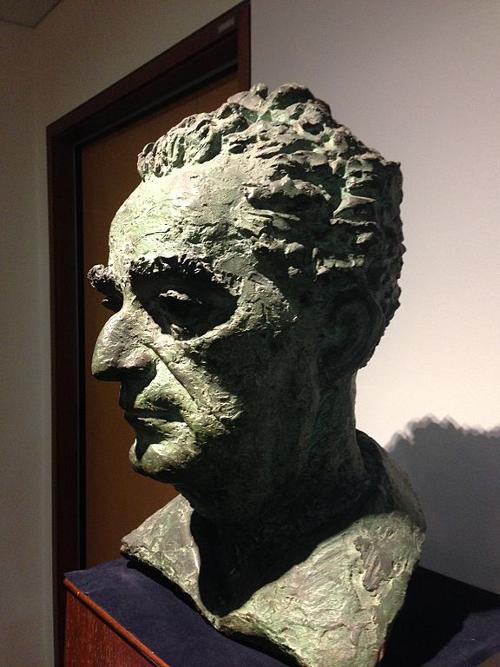 David Marshall, SingaporePhoto: Smunconlaw CC 4.0 International no changes made
David Marshall, SingaporePhoto: Smunconlaw CC 4.0 International no changes made
The 1955 elections were the first political elections to be held in Singapore. David Marshall became the first chief minister on April 6, 1955. Marshall resigned on June 6, 1956 after breaking off negotiations in London for full internal self-government. Lim Yew Hock, Marshall's deputy and Secretary of Labor, succeeded Marshall as Prime Minister. The March 1957 mission led by Lim Yew Hock was more successful.
On May 28, 1958, the "Constitutional Agreement" was signed in London and in 1959 self-government was achieved. Full general elections (51 members) were held for the first time in May 1959. On June 3, 1959, the new constitution was enacted, Singapore's self-government proclaimed, and Sir William Goode became the first head of state. The first government was sworn in on June 5 with Lee Kuan Yew as Singapore's first prime minister.
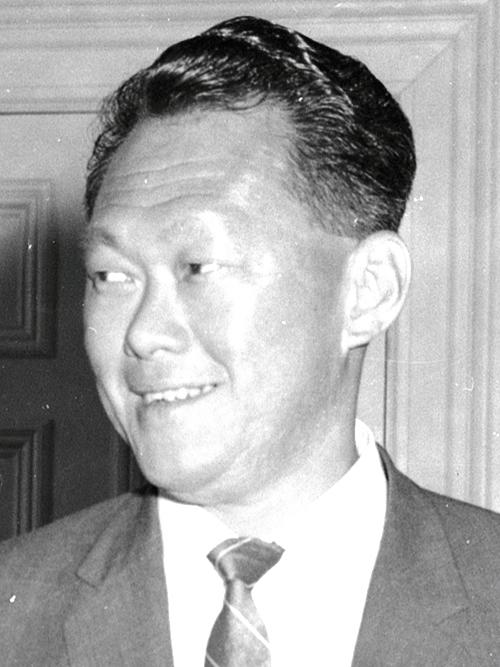 Lee Kuan Yew, SingaporePhoto: Wellington City Archives collection CC 4.0 International no changes made
Lee Kuan Yew, SingaporePhoto: Wellington City Archives collection CC 4.0 International no changes made
The coalition in the parliament of the moderate People's Action Party and the Communist Party worked together with great difficulty. The PAP wanted full independence for Singapore as part of a non-communist Malaysia; the communists strived for a purely communist state. Tensions between the two parties led to a split between the two parties in 1961. Another major party in this struggle were the Malays who agreed to merge into a federation with Malaya. The British would then retain control of foreign affairs, defense and internal security. On May 27, 1961, the Malay Prime Minister Rahman proposed to strengthen political and economic cooperation between Malaysia, Singapore, Sarawak, North Borneo and Brunei. They wanted a common policy on defense, foreign affairs and internal security. Issues such as education and labor remained the responsibility of the individual partners. A referendum held in Singapore on September 1, 1962 showed that the vast majority of the population was in favor of the plans. The Federation of Malaysia was founded on September 16, 1963, except for Brunei which withdrew. Indonesia and the Philippines strongly opposed this merger. Due to the difficulties of the state government of Singapore and the federal government of Malaysia, Singapore was expelled from the federation on 9 August 1965. On September 21, Singapore was admitted to the United Nations.
Singapore independent
On December 12, 1965, the republic of Singapore was proclaimed with the first president Yusof bin Ishak. A very extensive industrial plan was immediately drawn up and many industrial sites were newly built or expanded. Some laws were also passed, all aimed at giving free rein to the development of the economy.
In 1971 the last British troops withdrew from Singapore. Singapore entered the 1970s as a politically stable state with very high economic growth. In fact, parliament consisted of only one party all that time. In all elections to date, the PAP under the leadership of the Lee Kuan Yew won the vast majority or even all the seats! Lee Kuan Kew pursued a tough domestic policy. The trade union movement was silenced and political opponents were imprisoned or expelled, often accused of communist sympathies.
In 1990, Goh Chok Tong took over from Lee Kuan Yew, becoming only the second prime minister since 1959. However, it quickly became clear that the former prime minister as 'senior minister' continued to play an important role behind the scenes. In 1997 the PAP won the elections again with 81 out of 83 seats!
The first free presidential elections were held on 28 August. Singapore's first democratically elected president was Ong Teng Cheong, who died of lung cancer in February 2002.
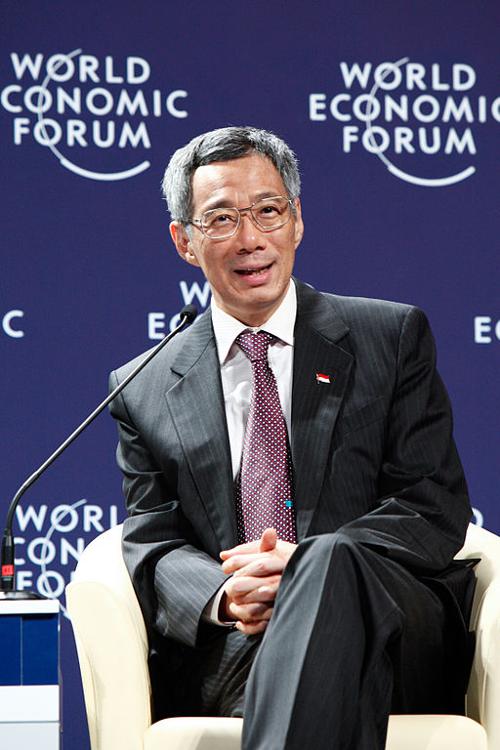 Lee Hsien Loong, SingaporePhoto: Sikarin Thanachaiary CC 2.0 Generic no changes made
Lee Hsien Loong, SingaporePhoto: Sikarin Thanachaiary CC 2.0 Generic no changes made
The ruling People's Action Party (PAP) won the 2006 parliamentary elections. The party received 82 of the 84 elected seats, 37 of which for lack of a rival candidate. The other two seats went to the Workers' Party. It was the first elections since Lee Hsien Loong succeeded Goh Chok Tong as prime minister in 2004. In 2008 and early 2009 Singapore will experience a recession. In July 2009 there are signs of recovery.
The President of Singapore has been Tony Tan Keng Yam since September 1, 2011. In November 2012, Singapore will face its first strike since the 1980s. In June 2013, Singapore asked Indonesia to take action against the forest fires. The air in Singapore was very polluted. In March 2014, Singapore became the second country in the world to regulate virtual money flows such as Bitcoin and Lee Hsien Loong became the new prime minister.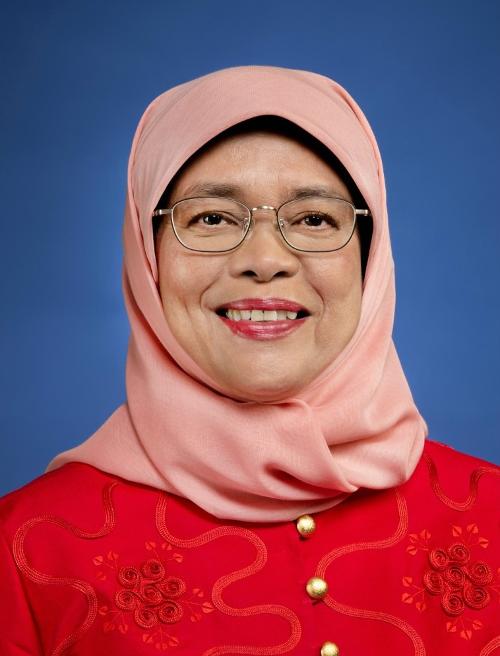 Halinah Jacob, SingaporePhoto: Lihat di bawah CC 3.0 no changes made
Halinah Jacob, SingaporePhoto: Lihat di bawah CC 3.0 no changes made
Lee Kuan Yew, Singapore's first Prime Minister, passed away on March 23, 2015 at the age of 91. In September 2015, parliamentary elections were held, the PAP won 83 of the 89 seats to be won. Singapore will have a first in 2017 Halimah Jacob is Singapore's first female president. In the elections of July 2020, the PAP retains the majority with the same result as in the previous elections.
Sources
Beliën, H. / Maleisië : Singapore
Gottmer
Hellander, P. / Singapore
Lonely Planet,
Oon, H. / Singapore
Van Reemst
Singapore
Ministry of Information and the Arts
Wee, J. / Singapore
Chelsea House Publishers
CIA - World Factbook
BBC - Country Profiles
Copyright: Team The World of Info